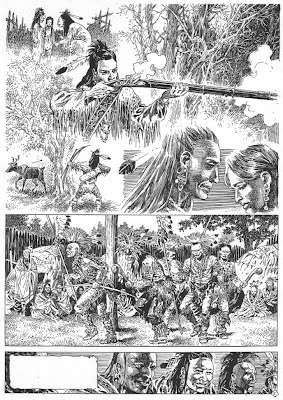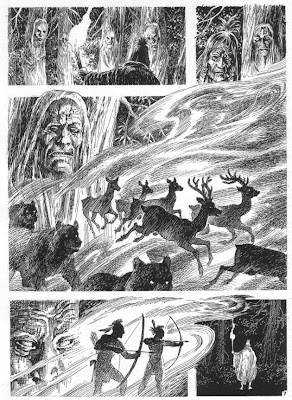
Durante las festividades religiosas de los iroqueses, la Sociedad de las Falsas Caras tenía un papel relevante. Los miembros de esta sociedad danzaban, cubriendo sus rostros con grotescas máscaras y haciendo sonar sus sonajas hechas con las caparazones de tortugas. Buscaban así ahuyentar a los malos espíritus. Las máscaras, según se cuenta, representaban fielmente los rasgos de los espíritus de la naturaleza que se aparecían en sueños a los iniciados, y que luego en la vigilia ellos mismos reproducían en madera. Esta creencia puede estar relacionada con las Grandes Cabezas que flotaban misteriosamente por el aire, en lo más profundo de la foresta.
During the religious festivities of the Iroquois, the Society of False Faces played a leading role. The members of this group danced, covering their countenance with grotesque masks and shaking their tortoise-shell rattles, to chase away evil spirits. It is said the masks faithfully reproduce the aspect of the spirits of Nature which appeared in dreams to the dancers, and which they later carved in wood. This belief may be connected with the Big Heads, mysterious creatures which floated through the air, in the deep of the forest.




Así como en el relato sobre el cuervo en el post anterior aparecía un Chenoo, de la raza de gigantes que vivían en los bosques, en la historia que sigue irrumpe sorpresivamente un Ohdowa, especie de enano que moraba bajo tierra.
In the raven story of the previous post we included a Chenoo, of the giant race which dwelled in the forest. In the one that follows, an Odhowa, a mischievous dwarf who lived underground, is featured.
Todas las imágenes son copyright de Enrique Alcatena




















































